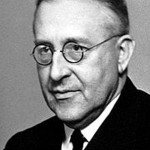Did you know that science approximates that 10 particles are going through your thumb per minute? 50 times that many would bombard your thumb above the earths atmosphere, and people who live at higher elevations receive several times more of these cosmic particles bombarding our planet every second, and long distance airline pilots can double their yearly doses of these particles.
They are known as “Energetic Charged Subatomic Particles” or “Ionizing Radiation” and very little is known of there origins, they have long been a conundrum to science and were first detected in 1785, The search for these particles have come from many countries, There was once an electroscope mounted to the top of the Eiffel Tower in France.
These particles are known to originate from space; about 89 percent of them are simple protons and hydrogen nuclei, but the question has always remained “where are they coming from” and what are their health effects to humans, as they are the biggest barrier to human interplanetary travel. Sciences knowledge in this area is still poor, When the Apollo Astronauts reported seeing sparks in their eyes, NASA immediately turned to the physicists for answers. As it turns out, they were seeing the effects of sub atomic particles hitting their retinas. What is known is that these particles when received in large doses can damage the DNA of reactive oxygen species, and that most of these cosmic particles cause little to no damage to us on the planets surface as there are a number of factors that protect earths inhabitants, However these cosmic particles contain very high energy, so high in fact that when they collide with molecules from our atmosphere they split in more particles. They are millions of times more energetic than the collider “CERN” in Europe, and that is how they know they are not going to blow up the world as some believe with the CERN particle accelerator, some of these particles have reached earths surface based collectors with enough energy to be dangerous to us humans; they are very few but the search for there origins continue.
The greatest contributor to our knowledge of these particles was the Austrian physicist and Nobel Laureate Victor Hess who climbed aboard his highly combustible hydrogen filled balloon on August 7, 1912 to try and learn more about this mysterious particle. Armed with a small brass encased electroscope, he lifted off at the Bohemian town of Aussig and gained an altitude of 5,300 meters while taking measurements, both day and night, at great risk to himself, before landing near Berlin, Germany,
Dr. Victor Hess discovered that the particles were not being radiated from earth as previously theorized but that they were coming from cosmic origins, The higher the altitude, the higher the radiation. This discovery earned him a Nobel Prize in 1936. Dr. Victor Hess escaped Nazi persecution with his Jewish wife to the United States in 1938 and became Professor of Physics at Fordham University before dying in 1964 in New York.
A group of physicists looking to catch a few “rays” have taken a trip south – and that brings us to the South Pole, As many countries set up laboratories at the South Pole, the ice in some areas is 9,000’ ft thick and that makes it a perfect place to research and study these tiny Sub Atomic Particles moving at near the speed of light “186,000 miles per second” and striking earth from all directions. The largest telescope in the world is located under the ice in Antarctica with one of its primary purposes to catch these tiny elusive particles, not to see out, but to receive in. Also used is a 450”ft balloon that circles 20 miles above the icy continent to catch cosmic rays, The study continues today, There are many people in Antarctica huddled in their laboratories at ice-stations searching for the answers of our health, our planet, our cosmos, and of course “Our Thumbs”.
Wesley J Hunt wes81461@yahoo.com
Crossroads Astronomy Club meets every 3rd Monday at the University of Houston at Victoria, room 223, West Building at 7:00pm
If you would like to view Mr.Hunt’s blog: http://wesleyjhunt.blogspot.com/

